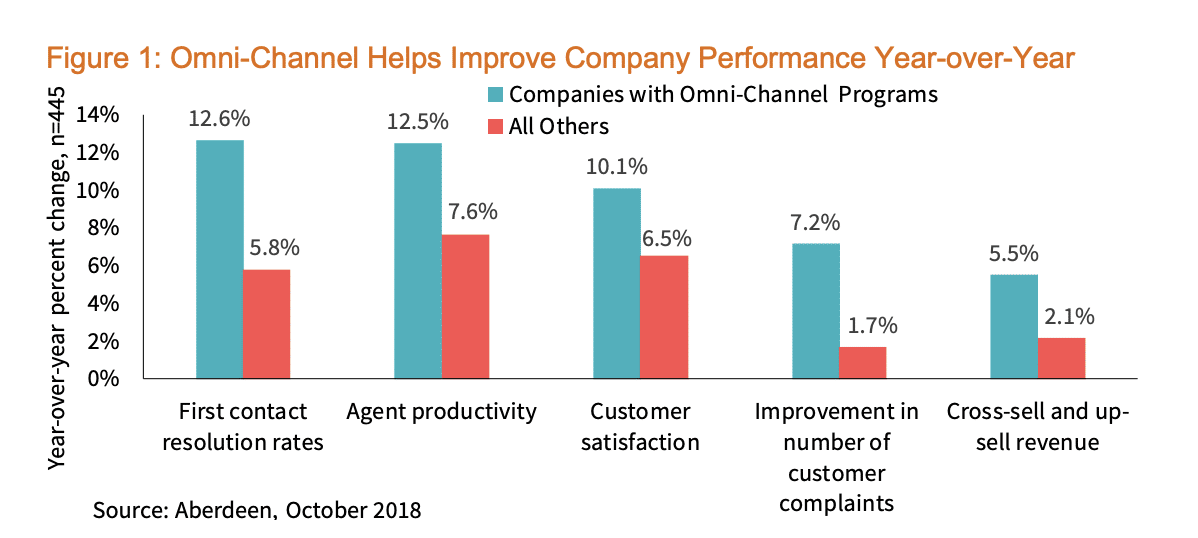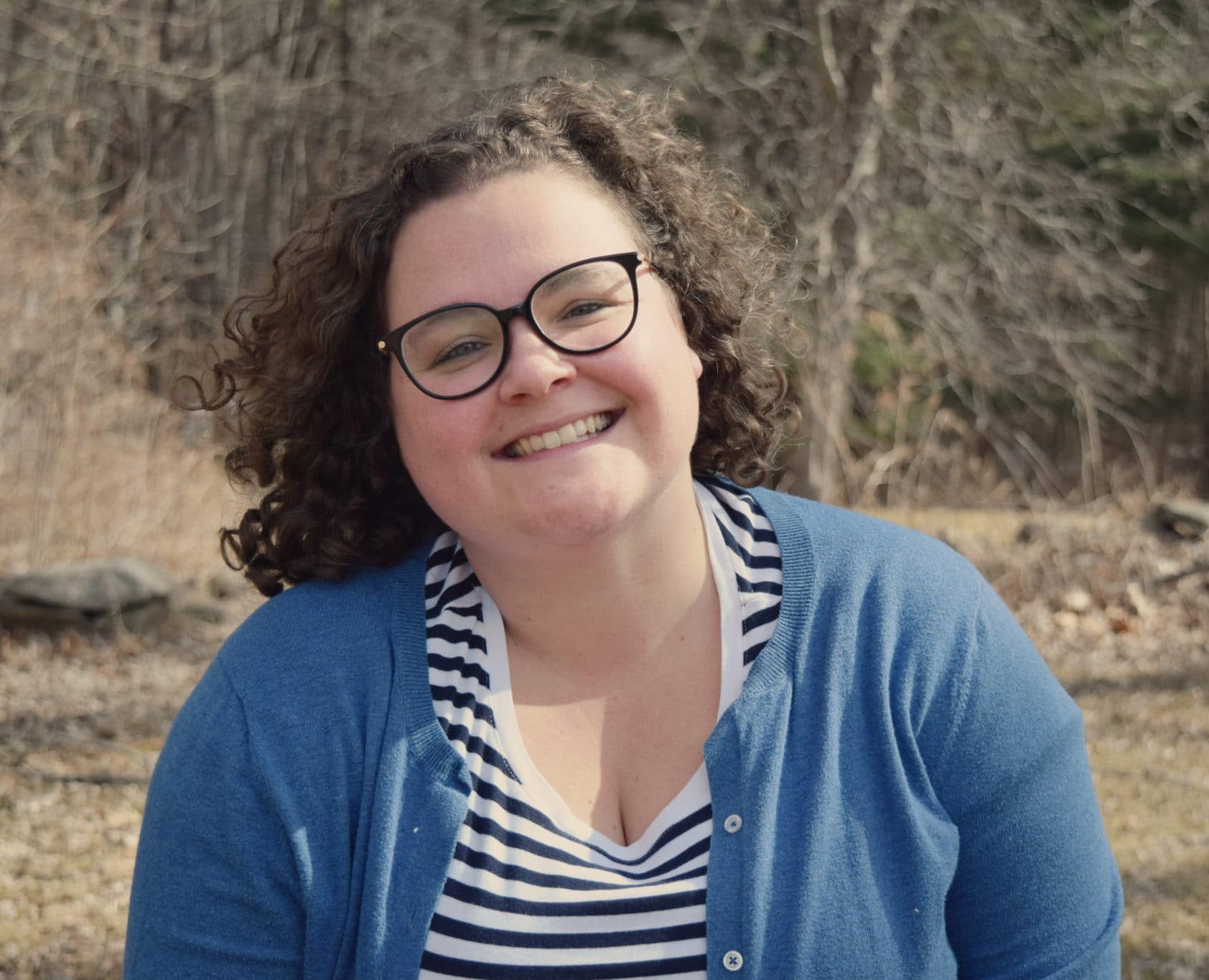How many channels of communication do you offer right now to your customers if they need help? Go ahead and do the math, we’ll wait.
Now that you’ve counted: how many of them are you doing well?
It can be hard to stay on top of all the new channels for customer service, but an omnichannel approach to customer service is becoming more and more essential if you want to truly thrive as a small business.
… But what exactly is “an omnichannel approach to customer service,” and how can you implement it for your small business? Today, we’ll cover:
- What is omnichannel customer service?
- 6 benefits of omnichannel customer service
- 14 best practices of omnichannel customer service
⭐️⭐️⭐️⭐️⭐️ Ready to offer 5-star customer service? Get strategies for every stage of the customer journey with this free eBook.
What is omnichannel customer service?
According to our research, customers today expect the ability to communicate with and be served by a business across a wide range of channels:
And that’s where omnichannel customer service comes in.
Simply put, omnichannel customer service means you’re everywhere, meeting your customers wherever they are and giving them a consistent level of service across their chosen channels of communication. It means they can email you today with a question, then pick up the phone tomorrow to continue the conversation without having to start from scratch.
Omnichannel vs multichannel customer service
Multi-channel customer service means you’re able to help customers in at least two channels of communication. Omnichannel customer service means you’re in more places, yes, but it’s also about the experience you provide your customers.
If multichannel customer service is a noun, omnichannel customer service is a verb: the action of making life easier for your customers for a seamless experience.
6 benefits of omnichannel customer service
There are lots of reasons to get into the omnichannel services game. Here are our favorites:
1. Improve your business across the board
Switching from multichannel to omnichannel customer service isn’t just good for your customers; it’s good for business. Providing seamless service to your customers can directly (and positively) impact their satisfaction as well as your team’s productivity and even your year-over-year revenue:

At this point in time, it looks like many businesses can’t afford not to diversify their customer service options.
[ebook-download title=”How customer-obsessed is your business?” link=”https://netstorage.ringcentral.com/documents/quiz_how_customer_obsessed_your_business.pdf” cta-text=”Take the quiz” src=””]
2. Stay relevant as a small business
Diversifying the way customers can reach you today isn’t just nice; it’s necessary. You can see in the above chart how businesses with omnichannel support outstrip the competition. That’s because, today, customers don’t stick around if service is slow, unhelpful, or difficult to access.
Being everywhere might seem daunting for you and your smaller team, but we’ve got tips and tricks later in this post that can help you adopt an omnichannel support approach for your customers.
3. Give your customer service a personal touch
Personalization is where small businesses can really shine. People today want to spend their money somewhere that makes them feel good. A recent study found that 65% of consumers are more influenced by a positive experience with a company than advertising.1
On the other hand, 70% of surveyed consumers said having to repeat themselves and their concerns all over again was “very annoying”:
We’d wager that’s because it makes them feel like no one is listening to them. But omnichannel customer service means uninterrupted service across channels, so your customers know you care.
4. Break down all the silos
Are your departments all stranded on their own little islands? Does it sometimes take forever to figure out who has the answer to a customer question? The nature of omnichannel customer service requires more teamwork and open communication. Here are some of the silos it helps break down:
- Agent silos. Are your agents technologically on a separate platform from the rest of your team? This can mean customers sitting on hold while they struggle to get answers from other departments. With the right customer engagement app, you can put everyone in the same place for easier messaging and file sharing.
- Tool silos. If agents have a bunch of tools on different platforms and they need to move between them to solve issues, that slows down efficiency. This means longer wait times and fewer people helped overall, and maybe even the need to shell out for more agents to pick up the slack. But an omnichannel customer service solution streamlines both communication and tools so everyone is on the same page.
- Customer info silos. With many customer data systems, people’s data is tied to how they enter the support system, locking them into whatever channel they first used. The right omnichannel support platform empowers cross-channel sharing of information that can allow, say, the social media team to see a customer’s journey with the company whenever that customer leaves a message on Instagram.
5. Find more cross-selling and upselling opportunities
Omnichannel support means more ways for customers to reliably reach you and be served. This means more people will be comfortable contacting you on their channel of choice, which offers your team more chances to connect these folks with your products and services, should the opportunity arise.
6. Nurture more loyal, happy customers
If people feel more comfortable contacting you, because they know you’ll respond promptly on their channel of choice, that sets off the best kind of domino effect:
You offer reliable, omnichannel customer service.
↓
Customers reach out with concerns on their favorite channel.
↓
You respond quickly and catch issues before they become a problem.
↓
Customers feel cared for and confident with your service.
↓
Customers stick around and sing your praises to friends and family.
↓
Customers’ friends and family become customers, too.
We know budgets are tight when you run a small business. But when you rely heavily on word of mouth to grow your base, investing in better customer service is something you can’t afford not to do. (And we don’t use double negatives lightly.)
14 best practices of omnichannel customer service
1. Put your communications in the cloud
Where do all of your customer service channels live right now? If you haven’t migrated to the cloud, you’re likely missing out on some serious opportunities to streamline and upgrade your level of service.
A great cloud-based customer service system pays for itself. With the ability to monitor all of your communication channels in one place, track customer journeys across these channels, and easily share information among your entire team, you’ll save time and money while delighting customers.
2. Simplify omnichannel support for your customer service team
Happy agents mean happier customers. And one big way you can impact your team’s vibe is to make their job as easy as possible.
Trying to respond to customers across a variety of channels can be overwhelming, which can lead to lost requests and your team feeling like they aren’t doing their best work. But a great customer engagement platform can set their minds at ease by putting all channels on the same screen. That means a Single Sign-on, less toggling, and easy-to-access customer information.
Here’s what the RingCentral omnichannel customer service platform looks like to your team: social media and email messages all together, tracking one customer across multiple channels:
An omnichannel engagement app also lets your service team set automated reminders, so they feel confident and on top of their game at all times and fewer customer questions fall through the cracks.
3. Close the omnichannel customer service gap
This one’s really important, reader.
The omnichannel customer service gap is the space between the quality of service you think you offer consistently across channels… and the service your customers actually receive on these channels. An example of this is a company making a Twitter account to promote products or services, but ignoring the comments and messages of customers looking for help.
If you’re selling on a platform, you should be serving on that platform, too. This is one big way you can positively align your business vision with customer perception.
4. Make all your channels mobile-friendly
Cell phone, tablet, laptop. Laptop, cell phone, laptop, tablet. People are constantly switching from screen to screen, and your omnichannel customer service should anticipate this kind of screen-jumping.
Be sure that all of your self-service options—your FAQ page, your chatbots, and the like—and contact forms are as accessible on mobile devices as they are on a real computer, or you’re bound to frustrate some customers.
5. Always have a human option
Chatbots are a type of automated customer service on the rise. In fact, the majority of surveyed consumers expect to interact with chatbots for their customer service needs:
But some customer concerns can’t be solved by automation, and people still expect the option to speak with a real person for a number of reasons. Some people aren’t all that comfortable with technology, and others simply prefer a one-on-one conversation, either written or on the phone.
When you’re setting up your interactive voice response (IVR) system and chatbots, be sure to include the option to speak to a real person so no one feels left out by the robots.
6. Integrate your CRM with your customer service software
Everyone hates having to repeat themselves when they call a company for help. That’s why weaving your CRM and customer service software together is a crucial step in delivering omnichannel support. This way, anytime a customer in the system calls or reaches out, an agent will be able to see their entire journey and the latest notes on their situation so they can easily pick up where the last agent left off.
For example, you can hook up Zendesk is just one of many CRMs you can hook up to RingCentral to make phone calls and messages a breeze:
You can even set up your automatic call distributor (ACD) to smart-route customers in your CRM to certain agents. For example, if you have Spanish-speaking customers on the books, you can route them to an agent who can help them in their native language for a more comfortable and helpful experience.
🕹️ Get a hands-on look at how RingCentral works by booking a product tour:
7. Treat every communication channel consistently
We’ve said it before and we’ll say it again: don’t sleep on social media. People are on social apps all day, every day. They don’t want to have to switch to your website or their email account to send you a message about your products.
True omnichannel customer service means delivering the same level of support on every channel you offer. For example, if you work hard to return voicemails within 24 hours or fewer, that same standard should apply to Instagram DM’s, too. Keep in mind: this might mean you need to upskill your service team in social media best practices while you’re at it.
8. Collaborate, collaborate, collaborate
Who likes to sit on hold? Nobody… okay maybe, like, five randoms who just love muzak.
Besides high call volumes, one major reason customers end up sitting on hold is broken-down communication among agents and other departments in a business. This is especially common if you have a remote support team who can’t get up from their desk and easily track down the person with the answers a customer needs.
An easy fix: put all of your people, information, and internal messaging in one platform, like RingCentral. That way everyone is working from the same central resources and can easily find answers without leaving customers hanging.
But don’t take our word for it. Best-in-class businesses outperform others in centralized communication and information sharing, and we’d wager that’s a huge reason for their overall success:

9. “Omnichannel” includes self-service
Give the people what they want: the ability to answer their own questions and help themselves. As generations shift and Millennials and Zoomers become the holders of the purse strings, self-service is becoming a more and more in-demand feature for businesses to offer.
What might self-service look like at your business? Here are a few possibilities:
- An intuitive, comprehensive frequently asked questions (FAQ) page where customers can find the answers to simple, straightforward queries
- A chatbot on every web page that is loaded with answers to your customers’ most common questions and needs
- A portal on your website for paying bills, checking on the status of an order, or adjusting their contact information
- An interactive voice response menu that lets callers complete simple tasks without clogging up the phone line (or their day): check their balance, find out store hours, and more
You know your customers better than we do; how can you offer them the kind of self-service they’re clamoring for?
10. Try skills-based routing for customer service calls
People love knowing they’re talking to an expert. With skills-based routing via your automatic call (and contact) distributor, you can send phone calls, messages, and emails about a certain topic directly to the agent who knows how to handle it best.
Skills-based routing often means a better first call resolution rate and more customers who trust in your service team’s ability to get the job done.
11. Survey your customers (and employees) regularly
All of these other steps are well and good, but if they don’t pay off in improved customer satisfaction, what’s the point? That’s why it’s important to regularly and consistently take the temperature of your patrons, so you know if your ideas are paying off on the ground.
There are lots of ways to survey your customers. Here are three we like:
- Single-question surveys at the end of service interactions and purchases
- Informal check-ins via phone, SMS, or email
- Yearly or twice-yearly long-form surveys for more in-depth feedback
You can’t know how well you’re offering service across all of your channels without hearing from the people you’re serving. Start small at first with a simple question on customer satisfaction or another targeted area (“How satisfied are you with the service we provide via social media?”, perhaps) and go from there.
P.S. Survey your service team regularly, too. They’ll have firsthand knowledge of what customers are asking and where processes get bogged down.
12. Use metrics to measure success
On top of the data you get from customer surveys, your customer service software churns out lots of information about interactions that you should be monitoring.
Call center metrics won’t just show you if you’re on the right track to aligning vision with perception in your omnichannel customer service. It’ll help you better map out your automated customer service journeys via interactive voice response, chatbots, and your FAQ pages.
And with a comprehensive customer service platform like RingCentral, all of these metrics will come standard, with easy-to-understand visuals and dashboards:
13. Reward your customer service team for a job well done
It doesn’t need to be something big and splashy, or even have monetary value. But employee recognition is crucial to employee retention and satisfaction.
Remember how we mentioned all the data your contact center is gathering? You can use that data to see who on your team is doing great work that deserves some public praise. Maybe they’ve got a great first call resolution rate or you see customers praising them by name on social media or in online reviews. Come up with some creative ways to show your appreciation and see how this positively impacts customer service overall.
14. Train your agents to upsell and cross-sell
Your customer support team has a lot of inbound contact with your current and future customers. Do they have the skills and training to do some basic upselling or cross-selling for you?
For example: Let’s say you run a small skincare business, with homemade products. A customer calls and says they love your products, but the latest lotion they bought gave them a rash because they have sensitive skin.
With the right training, the agent who answers the call could tell them about your brand-new, fragrance-free line made especially for sensitive skin. The customer is so thrilled with this development that they put their refund right back into your store and buy three other products on top of it.
Make sure your agents are well-versed in the products and services you offer, so they can connect your customers with the right products and services to help them. You never know how much money you might be leaving on the table if you don’t.
Omnichannel customer service: easier than you think
It can seem daunting to expand your customer service into new channels. But meeting your customers where they are doesn’t have to be a chore.
Our biggest suggestion to you: if you’re going to offer omnichannel support, go all-in and do it right. This means finding the right platform that combines all of your existing channels in one easy-to-manage screen instead of cobbling together different apps. Make sure the platform can grow with you, too, as you’re likely to see some serious growth with a more diverse and customer-centric approach to your service.
Originally published Apr 16, 2020, updated Jun 18, 2024










